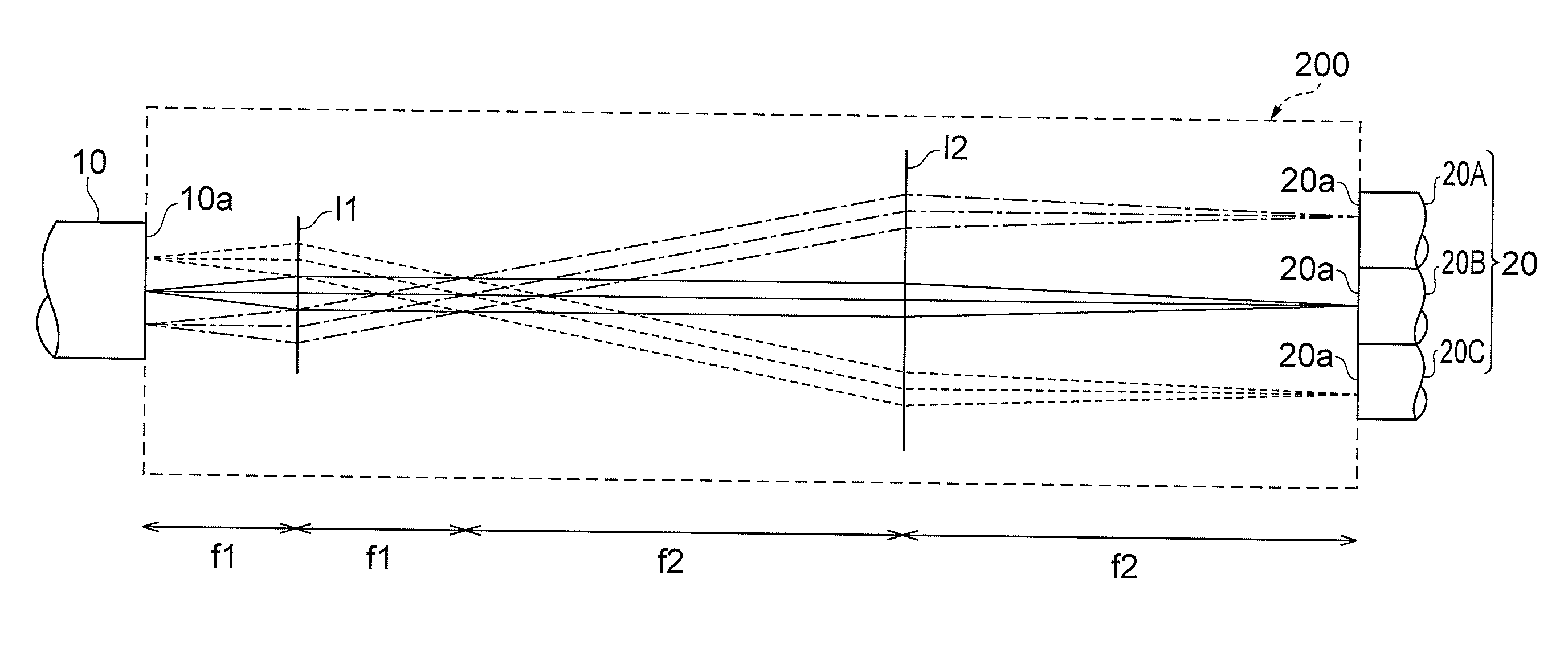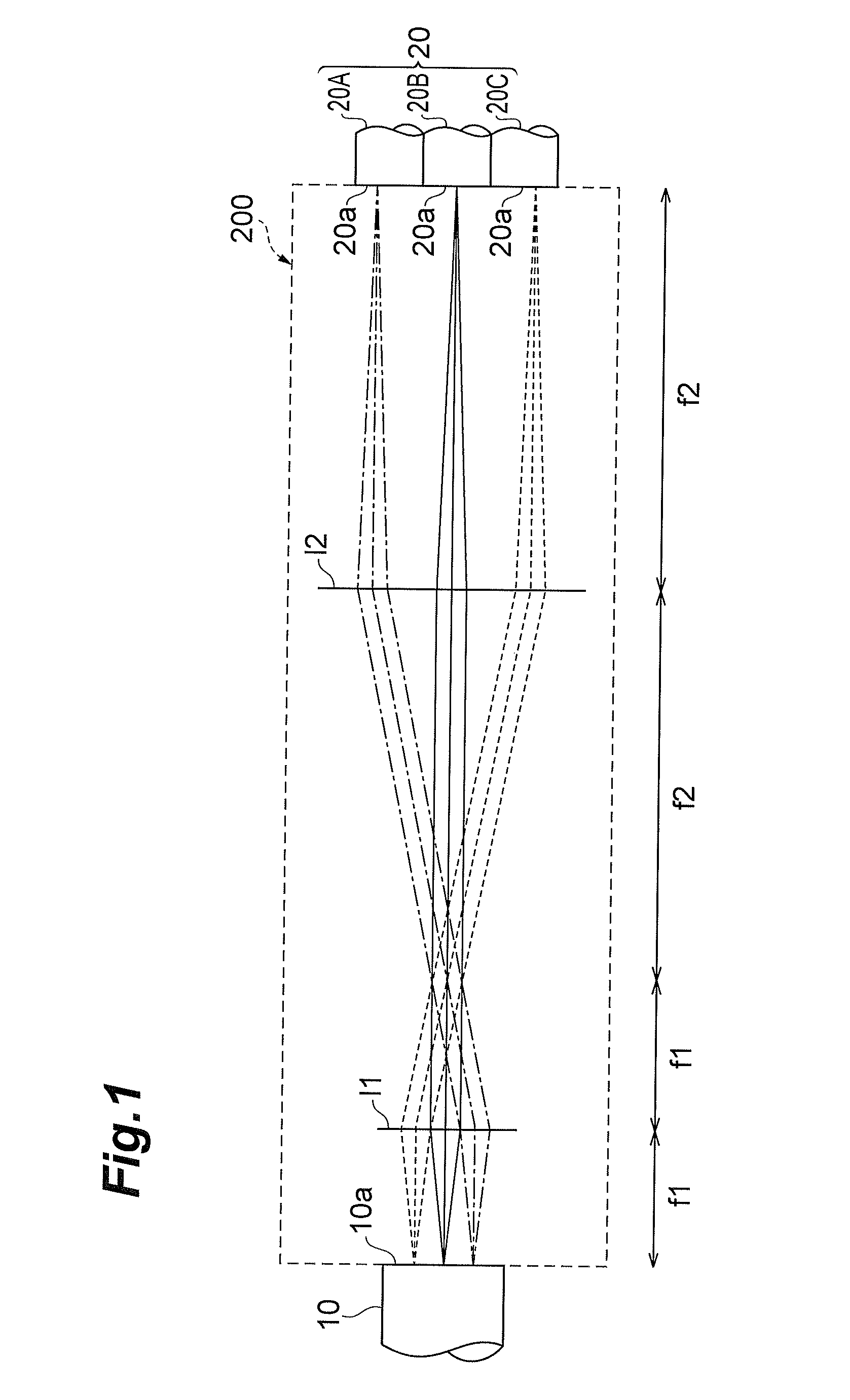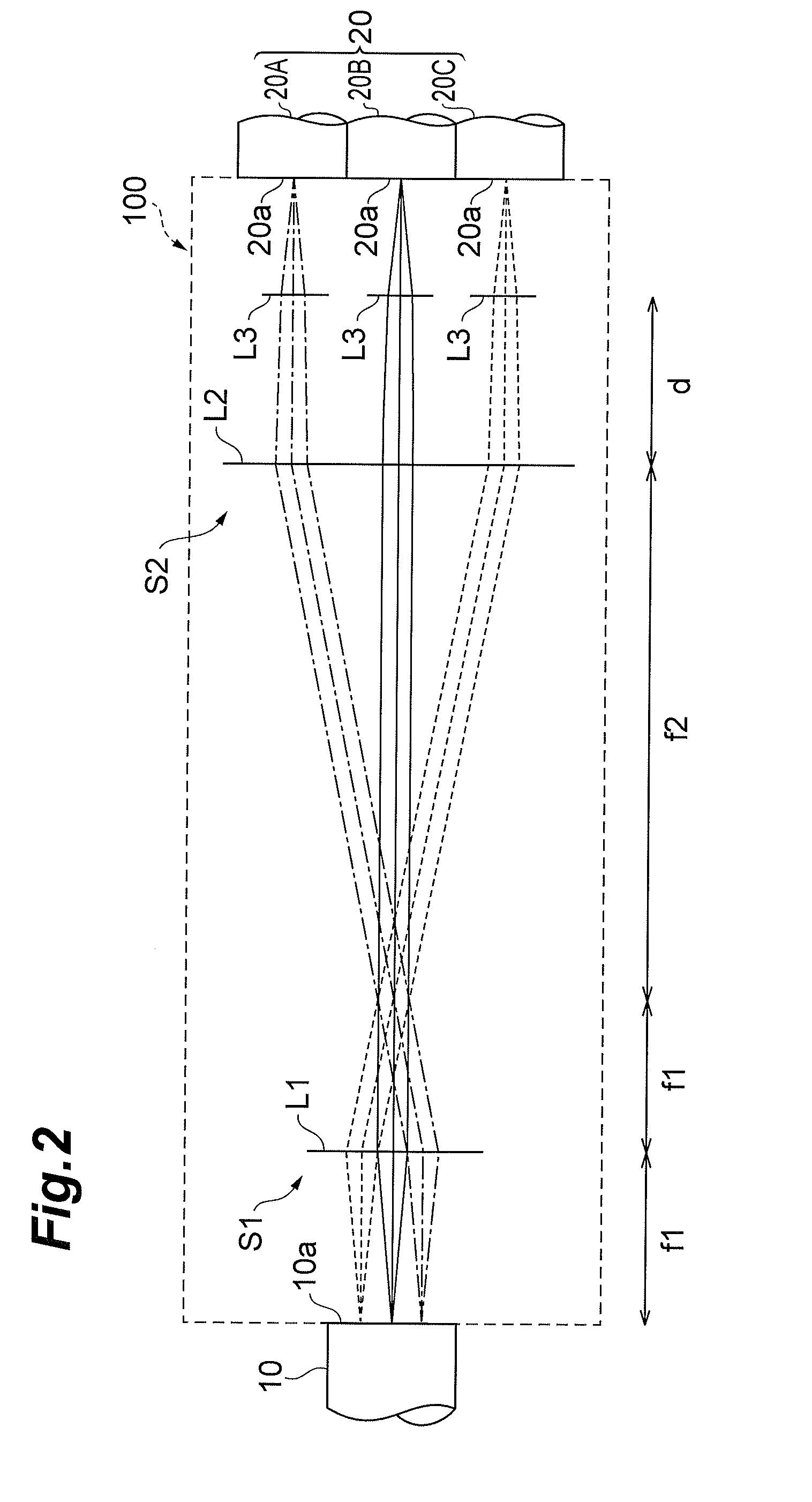Optical device
- Summary
- Abstract
- Description
- Claims
- Application Information
AI Technical Summary
Benefits of technology
Problems solved by technology
Method used
Image
Examples
first embodiment
[0047]First, an optical device 100 according to the first embodiment will be described with reference to FIG. 2.
[0048]As shown in FIG. 2, the optical device 100 is a device for coupling the multi-core fiber 10 (optical element) to the single core fibers 20 (other optical components) in order to propagate a single-mode light signal (wavelength multiplexed signal), and is configured by including a first optical system S1 and a second optical system S2. Hereinafter, the optical device using the multi-core fiber as an optical element and being included in the present invention is referred to as multi-core fiber coupling device.
[0049]The multi-core fiber 10 used in this embodiment is an optical element including a plurality of light output parts having respective optical axes that are parallel to one another, and specifically, has seven core regions, and emits seven beams (only three beams are shown in a sectional view of FIG. 2) from an emitting end surface 10a. More specifically, the s...
second embodiment
[0061]Subsequently, a multi-core fiber coupling device 100A according to the second embodiment will be described with reference to FIG. 4.
[0062]As shown in FIG. 4, the multi-core fiber coupling device 100A is different from the multi-core fiber coupling device 100 according to the first embodiment only in a configuration of the second optical system S2.
[0063]The second optical system S2 of the multi-core fiber coupling device 100A are constituted by a lens array L4 to L6. The lens array is constituted by seven lenses (only the three lenses L4 to L6 are shown in a sectional view of FIG. 4) so as to correspond to the respective seven beams. A focal length of each of the seven lenses L4 to L6 of the second optical system S2 is f1, which is equal to the focal length of the condensing lens L1 of the first optical system S1.
[0064]For this reason, the spread angle θOUT on the end surface 10a of the multi-core fiber 10 becomes equal to the spread angle θIN on the end surfaces of the single ...
third embodiment
[0067]Next, a multi-core fiber coupling device 100B according to the third embodiment will be described with reference to FIG. 6 to FIG. 8.
[0068]As shown in FIG. 6, the multi-core fiber coupling device 100B is different from the multi-core fiber coupling device 100A according to the second embodiment described above only in a configuration of the second optical system S2. That is, the second optical system S2 of the multi-core fiber coupling device 100B is constituted by one lens array in which seven lens pieces L7 to L9 are combined in place of the seven lenses L4 to L6.
[0069]Such multi-core fiber coupling device 100B also can obtain the same or similar effect as the multi-core fiber coupling device 100 according to the first embodiment.
[0070]Here, in the case of more practical lens, not an ideal lens, an aberration of the lens is required to be considered.
[0071]As shown in FIG. 7, a plurality of beams passing through the lens array L7 to L9 of the second optical system S2 does not...
PUM
 Login to View More
Login to View More Abstract
Description
Claims
Application Information
 Login to View More
Login to View More - R&D
- Intellectual Property
- Life Sciences
- Materials
- Tech Scout
- Unparalleled Data Quality
- Higher Quality Content
- 60% Fewer Hallucinations
Browse by: Latest US Patents, China's latest patents, Technical Efficacy Thesaurus, Application Domain, Technology Topic, Popular Technical Reports.
© 2025 PatSnap. All rights reserved.Legal|Privacy policy|Modern Slavery Act Transparency Statement|Sitemap|About US| Contact US: help@patsnap.com



